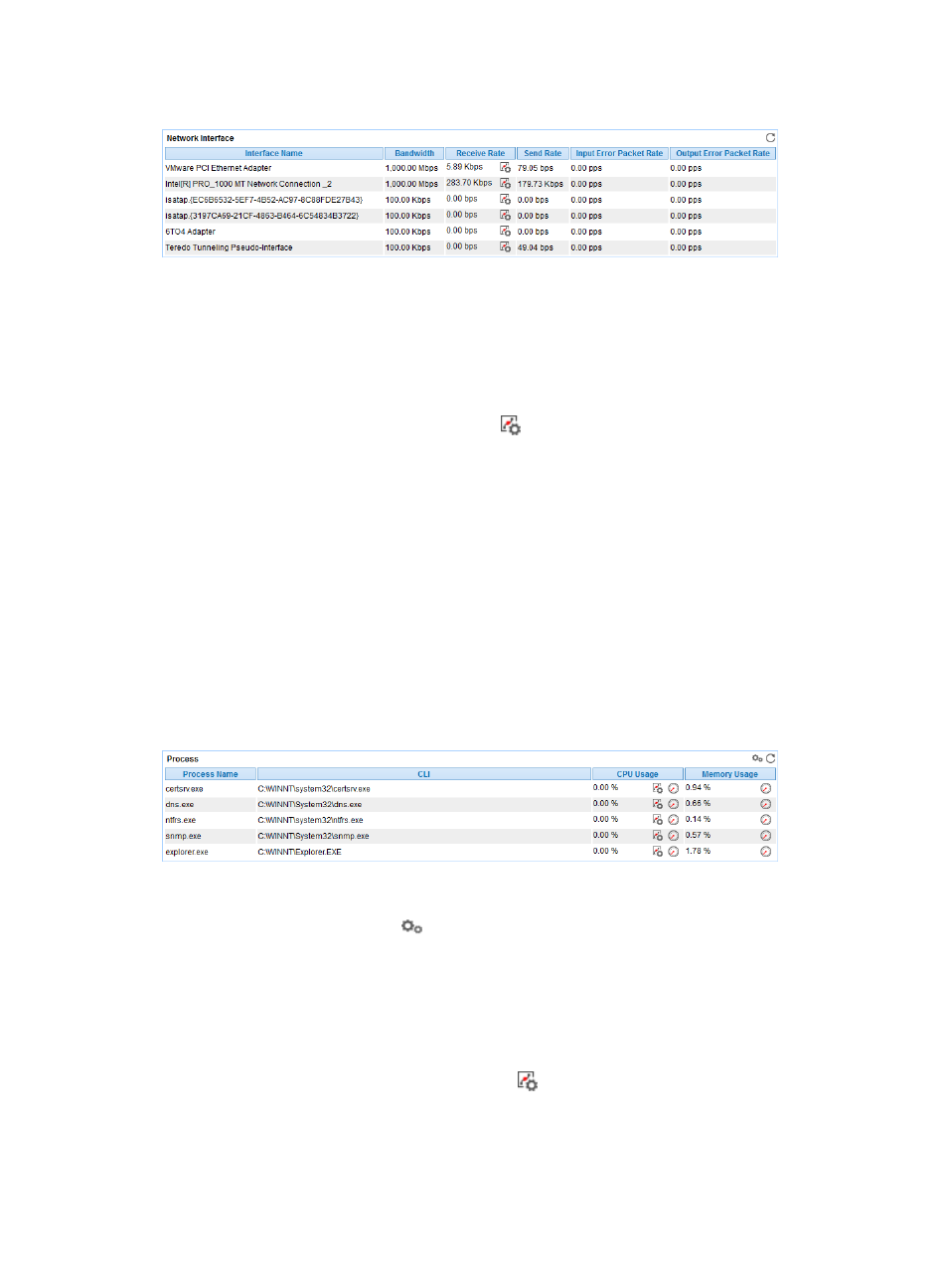Process, Figure 43 – H3C Technologies H3C Intelligent Management Center User Manual
Page 104

90
Figure 43 Network Interface area layout
Network Interface area fields:
•
Interface Name—Name of the network interface card (NIC). APM monitors both physical and
virtual (logical) network interface cards.
•
Bandwidth—Maximum bandwidth of the NIC.
•
Receive Rate—Receive rate of the NIC in the last polling period.
Set Threshold—Click the Set Threshold icon
for a NIC to set receive rate alarm thresholds for
it. The receive rate of the NIC is highlighted in orange when it reaches the level-1 threshold, and
is highlighted in red when it reaches the level-2 threshold. Use either the global thresholds or
custom thresholds. For information about setting thresholds, see "
."
•
Send Rate—Send rate of the NIC in the last polling period.
•
Input Error Packet Rate—Number of inbound error packets per second on the NIC in the last
polling period.
•
Output Error Packet Rate—Number of outbound error packets per second on the NIC in the last
polling period.
Process
By default, APM does not monitor any process, and the process list is empty. APM collects CPU and
memory usages of selected processes. The Process area layout is shown in
.
Figure 44 Process area layout
Process area fields:
•
Config—Click the Config icon
to quickly populate the Application Instance List with all detected
processes running on the Windows operating system. Select the desired processes and click OK.
APM collects CPU and memory usages of the selected processes in the next polling interval.
•
Process Name—Name of the process.
•
CLI—Command line used to start the process.
•
CPU Usage—CPU usage of the process in the last polling period.
{
Set Threshold—Click the Set Threshold icon
for a process to set CPU usage alarm thresholds
for it. The CPU usage ratio of the process is highlighted in orange when it reaches the level-1
threshold for the process, and is highlighted in red when it reaches the level-2 threshold. Use
either the global thresholds or custom thresholds. For information about setting thresholds, see
"